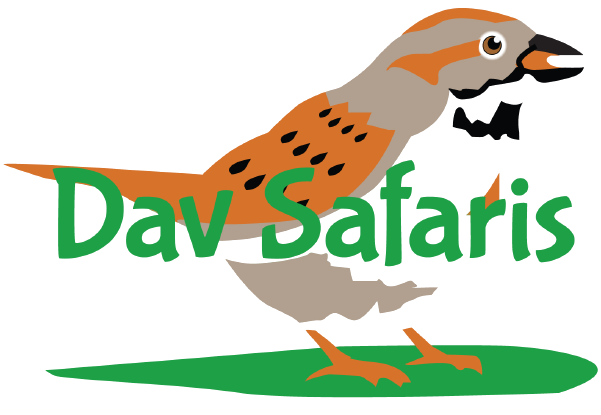Driving from Serengeti to Masai Mara on wildlife safari is nothing short of a captivating journey through two of Africa's most renowned national game reserves to witness the stunning landscapes and diverse wildlife along the way. Serengeti national Park in northernTanzania spans over an impressive 14,763 km2 of unspoiled savanna plains, a sanctuary for a diverse array of iconic wildlife species. It is home to the largest lion population in Africa and hosts the annual spectacle of over 1.5 million blue wildebeest and 250,000 zebras migrating across the savanna, making it a treasure trove of natural wonders. The park's ecosystem supports a rich variety of mammal carnivores, bird species, and reptiles, making it a haven for wildlife lovers seeking an immersive wildlife safari experience.
Continuing the journey into Masai Mara in Southern Kenya, the vast wildlife safari conservation and wilderness area in Narok, Kenya, bordering Tanzania's Serengeti National Park, unfolds a whole new chapter of adventure. Named after the indigenous Masai people, the reserve is celebrated for its diverse wildlife population and its role as the stage for the Great Migration, a natural spectacle that has earned it recognition as one of the Seven Natural Wonders of Africa. The Masai Mara's landscape, characterized by open grasslands, seasonal river lets, and clusters of acacia trees, provides a picturesque backdrop for wildlife sightings and offers a unique blend of wildlife, culture, and natural landscapes.
The journey from Serengeti to Masai Mara on a wildlife safari offers an unparalleled opportunity to witness some of Africa's most iconic wildlife in their natural habitats. From the divine sights of hunting lions in the charming Serengeti plains to the breathtaking spectacle of wildebeest and zebras crossing the Mara River in Masai Mara, this safari is a once-in-a-lifetime experience for nature enthusiasts and wildlife lovers. The transition from the vast savannas of Serengeti to the open grasslands of Masai Mara provides a seamless immersion into the rich biodiversity and natural beauty that define these two exceptional game reserves.
The cultural significance of the Masai people adds a unique dimension to the wildlife safari experience, offering visitors the opportunity to engage with traditional communities and gain insight into their way of life. The Masai Mara is not only a haven for wildlife but also a living cultural landscape where ancient traditions and modern conservation efforts intersect, creating a truly enriching experience for travelers a Tanzania Kenya wildlife safari.
Popular tour packages
2 Days fly in Serengeti safari in tanzania
2 Days Tarangire national park and Ngorongoro crater safari
4 Days epic Tanzania wildlife and culture safari
3 Days Amboseli national park safaris
4 Days Masai mara and lake nakuru safari
8 Days wildlife and beach holiday Tanzania
10 Days best of Kenya safari holiday
12 Days Kenya and Tanzania wildlife safari
What wildlife to expect to see during wildlife safari driving from Serengeti to Masai Mara
The Serengeti and Masai Mara are home to a wide variety of wildlife, including the "African Big Five" (lion, elephant, buffalo, leopard, and rhinoceros), as well as cheetahs, giraffes, zebras, wildebeest, and numerous other species. Keep an eye out for these magnificent creatures as you traverse the savannah in search of unforgettable wildlife encounters.
How long does the drive from Serengeti to Masai Mara take on a wildlife safari driving from Serengeti to Masai Mara?
The drive from Serengeti to Masai Mara on a wildlife safari takes about from 5 to 8 hours, depending on road conditions, weather, and wildlife sightings along the way. It's important to plan for sufficient travel time and factor in stops for wildlife viewing and rest breaks.
What are the road conditions like between Serengeti and Masai Mara on a wildlife safari?
The roads between Serengeti and Masai Mara can vary in quality, from well-maintained paved roads to rough dirt tracks. It's advisable to travel in a sturdy 4x4 vehicle that can handle the diverse terrain and potential challenges of off-road driving.
Are there any accommodations or rest stops along the way from Serengeti to Masai Mara on a wildlife safari?
There are several lodges, camps, and rest stops scattered along the route from Serengeti to Masai Mara, offering opportunities to rest, dine, and even spend the night amidst the wilderness. It's essential to plan your itinerary in advance and make reservations at accommodations that suit your preferences and budget.
What safety precautions should be taken during the wildlife safari drive from Serengeti to Masai Mara?
While driving from Serengeti to Masai Mara on a Wildlife safari, it's crucial to adhere to safety guidelines provided by experienced safari guides or tour operators. This includes staying inside your vehicle during wildlife encounters, keeping a safe distance from wild animals, and following any instructions given by your guide.
What are required fees for the drive and wildlife viewing on a wildlife safari from Serengeti to Masai Mara?
Travelers embarking on a wildlife safari from Serengeti to Masai Mara may need to obtain relevant permits or pay conservation fees for entering national parks or wildlife reserves along the way. It's important to research and prepare for any required permits or fees in advance to ensure a smooth and compliant journey.
What is the best time of year to drive from Serengeti to Masai Mara on a wildlife safari?
The best time to embark on a wildlife safari from Serengeti to Masai Mara is during the annual wildebeest migration, which typically takes place between July and October. During this time, millions of wildebeest, zebras, and other herbivores migrate in search of greener pastures, creating a spectacular wildlife spectacle that is not to be missed.
